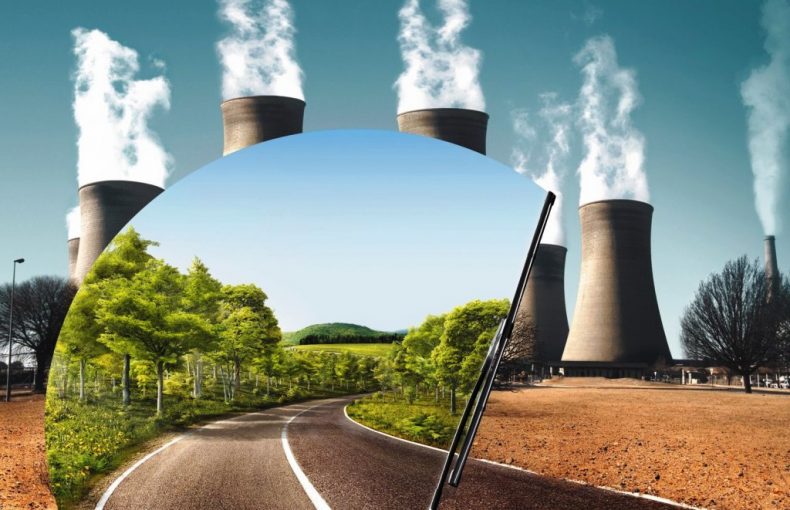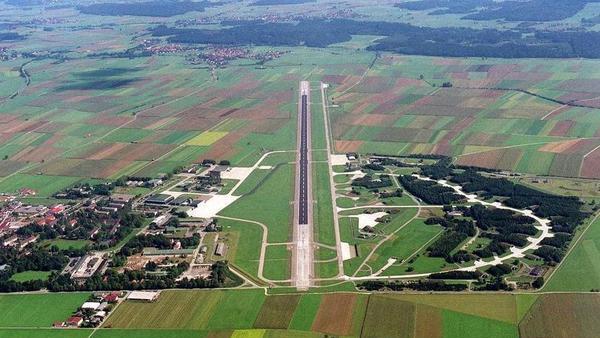All the industry discusses #flygskam (flyshame), but even given sound studies disqualifying the topic, our own lobbyists fail to organize a concerted response to the case. Let’s have a reality check…
There were some reports recently on German television and in the media. German “Welt” (TV + newspaper) reported “Green (party) Demands: Climate Sin Domestic Flight? Abolition Hardly Saves CO2“.
The use of ships to travel from Scandinavia or Britain to Europe or crossing the Mediterranean I think I don’t need to remind of the extreme emissions of cruise and other ships?
Rail Greenwashing
 But there was another article even more to the point: “Where there is a will there is not always a train“. But there are some issues that are unrealistic. The numbers of German Rail are biased and greenwashed. They claim to use only “Green Power”. But in fact, published by the German Federal Environmental Agency, their power comes from the public grid and no matter what “deals” they do, it is grid power. And on the grid, in 2018 only 16.6% has been “Green” (Source). The energy industry accounts for 85% of all Greenhouse Gases of which 98% CO2, the remainder being mostly Methane (CH4) and nitrous oxide (N2O) (Source).
But there was another article even more to the point: “Where there is a will there is not always a train“. But there are some issues that are unrealistic. The numbers of German Rail are biased and greenwashed. They claim to use only “Green Power”. But in fact, published by the German Federal Environmental Agency, their power comes from the public grid and no matter what “deals” they do, it is grid power. And on the grid, in 2018 only 16.6% has been “Green” (Source). The energy industry accounts for 85% of all Greenhouse Gases of which 98% CO2, the remainder being mostly Methane (CH4) and nitrous oxide (N2O) (Source).

But what also needs to be taken into account is the emission per passenger. Be it rail, in average used 22% only, whereas those passengers are mostly commuters, filling up the trains above their limits in the rush hours. That is not only true for the commuter but also the long-haul routes. This year, the long-haul trains’ punctuality was only 69.8%. For 2018, German Rail reported 16 routes operating above capacity – passengers finding no seat being just another annoyance, half of the delays are a result of those overused routes. That 20% of the trains are in (often unscheduled) repairs, toilets and air condition known to be out of service just being others. Just a reminder, the average load factor of flights according to IATA is about 85%.
e-Mobility: Battery Greenwashing
 Given the devastating destruction of the natural environment in Lithium mining, I do not understand that politicians push forward battery-based e-Mobility. Using fuel-cell technology we can use the existing gas stations infrastructure. Refueling takes only about five minutes! And given a broad use will lower the prices and make the technology available on smaller cars too. They can even power scooters, so don’t tell me it doesn’t work for a compact car!
Given the devastating destruction of the natural environment in Lithium mining, I do not understand that politicians push forward battery-based e-Mobility. Using fuel-cell technology we can use the existing gas stations infrastructure. Refueling takes only about five minutes! And given a broad use will lower the prices and make the technology available on smaller cars too. They can even power scooters, so don’t tell me it doesn’t work for a compact car!
Instead they promote an ecologically catastrophic technology with a completely missing loading infrastructure…?
More information I addressed in September 2021 in the post The e-Mobility Lie. Inspired by a documentary by German ZDF’s Planet(e): Mythos Elektroauto (naturally German). [Added Oct.21]
Ground Sealing
 There is an important advantage of air travel to both rail and road that is frequently not addressed. The issue of ground sealing!
There is an important advantage of air travel to both rail and road that is frequently not addressed. The issue of ground sealing!
Airport
For an airport, about 2,500 x 45m are typically “sealed for the runway, in total about 3,000 by 400 m are required for a regional airport, of which only 25-30% of the ground are “sealed” by infrastructure, 70-75% being grass areas. So we talk about 400,000 m² of an average regional airport being “sealed.
Highway
 A highway with four lanes is about 31 m wide with about 24 m being sealed. A 50 km highway such seals about 1.2 million m², so three times as much as a single airport. Highways are known to be an insurmountable obstacle for wildlife.
A highway with four lanes is about 31 m wide with about 24 m being sealed. A 50 km highway such seals about 1.2 million m², so three times as much as a single airport. Highways are known to be an insurmountable obstacle for wildlife.

 Rail
Rail
For Rail we talk about a minimum of 12 meters sealed width for 2 tracks, up to 20 meters on high speed train routes and and average of about 15 meters. So on 50 km of rail we talk about 600,000 m² of sealed ground. Before we start talking about the railway stations…
Ground Sealing Summary
I don’t have the number, not even for Germany, but it might be an interesting comparison for the aviation industry to compare the total ground sealed for highways (not talking about cities) and rail, compared to airports. I think that will be a devastating result for the ground transportation modes.
My hope on rail is that hyperloop we will not seal more ground, but will be established underground.
Bio-/SynKerosene

Yes, I am a big fan of the CO2-tax. If it is used to compensate for bio- or better SynKerosene! So far, all eco-taxes are abused to cover up for growing demands of the policos for their “other agendas”. But did you know that the German air traffic accounts for less than 0.3% of the CO2-emissions in Germany? (Source)
National Geographic last year reported about a development by Canadian Carbon Engineering, using CO2 with hydrogen (H2) to create artificial kerosene (and gasoline). Whereas there are industry sources to provide excessive CO2, hydrogen can be created using solar parks. The resulting bio-kerosene is an independent power storage. As the CO2 from burning that bio-kerosene equals the amount that was used from the environment, it is a completely climate neutral solution. And using solar energy for the electrolysis and the power needed for the processing, there is a power loss, but that is ecologically irrelevant.
But… Why do the media and politicos actively neglect those developments? Why do they go for dirty Lithium?
Summary
So what is the reality check for #flygskam (flight shame) vs. the “green rail”? Green rail is a myth, the power consumption not close as “green” as they say. Considering the ground sealing also favors aviation. And should we in aviation invest large scale into bio-kerosene, lowering the prices to competitive cost levels, replacing crude-oil-based fuel… A CO2-tax such might be an enabler for the conversion. If our lobbyists would show balls, which I’m afraid from experience, they don’t have.
But sustainable transport, including air transport is acknowledged as an important factor in the United Nations Sustainable Development Goals to develop regions, counterbalancing inequalities and disparities!

I think it should not be aviation bashing, nor should we greenwash rail, but we should develop a sustainable transport network for everyone. Connect individual transport to rail, hyperloop or flight. It is the mix we need, not enemy stereotypes! And we need funds to support strategic projects selected, not the ones having the biggest lobbies. And “batteries” are no solution but a pest! Lithium mining destroys the planet!
#flyshame is out! Flying is a vital service for a global world. To disqualify it with false facts does not help to make our world a better place.
#railshame is my new buzzword!
Food for Thought!
Comments welcome…

Comments
Another article on Lithium mining. Ain’t it interesting how politics and industry ignore such information but keep focusing on dirty battery-driven e-mobility, while hydrogen power can use the existing gas stations, does not need hours of reloading and the hydrogen can be electrolyzed from renewable power (solar, wind, water)?
And a case of a wrecked Tesla in Austria raised questions about the recycling of Tesla’s 600kg battery. Link to Google-translated page
Another comment (2024). Since posting the article in 2019, SynFuels (which were in 2019 still referred to as “bio fuels”) became a common issue, considered “too expensive”. Though for Kolibri, we could make the business case easily, just suffering from “bad publicity” and (impact?) investors focusing on the small, low hanging fruit.
Side note: bio fuels are from biological sources and are currently blended by a few percent into fossil kerosene. For cars, you may know “E10”, being fossil gasoline blended with 10% “bio fuel”.
SynFuel is created in a chemical process from hydrogen and carbon-dioxide (from green sources hopefully) and it’s possible to operate flights using modern engines at 100% SynFuel. No fossil blending needed! Big difference to “bio fuels”.